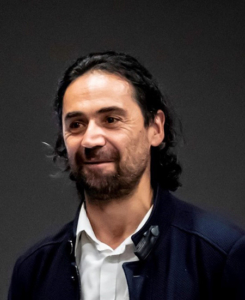Stéphane Avril is a faculty member at Mines Saint-Étienne, studying the mechanics of the materials that make up the human body. It is a discipline combining both physics and biology that involves understanding how human tissues resist the deformation and forces applied to them, for how long, and to what extent their functions are modified as a result. The researcher is particularly interested in one type of tissue: arteries, distributing blood from the heart to the rest of the body.
As part of his work, the researcher collaborates with hospitals to collect samples, which he uses to develop digital twins with his team. In other words, he creates a virtual model of patients’ arteries in order to simulate surgical operations before they take place, thus helping practitioners.
A transparent revelation
However, the researcher received general engineering training, and was in no way predestined to work in the medical field. Stéphane Avril specialized in solid mechanics and first worked on the resistance of composite materials used in aircraft structures. The turning point came during a sabbatical at Loughborough University in England: “I was working with a team developing imaging techniques to analyze the deformation of materials. The problem was that the composite materials were too opaque to experiment with these new techniques. So, we first used them on semi-transparent materials, in this case, biological tissue.”
He soon developed a passion for the mechanics of these very particular materials. “Biology and mechanics are intimately linked. Unlike the materials I studied before, whenever forces are applied, human tissues change and so do their biological functions,” explains the researcher. From that point on, there was no turning back.
Upon his return from the UK, Stéphane Avril joined Mines Saint-Étienne, where a biomechanics laboratory was being developed. “When it came to solid mechanics, there was still a lot to discover and understand about biological tissues,” he says. For fifteen years now, the researcher has been training with biologists, which culminated in him becoming the co-director of an Inserm co-supervised research unit, SAINBIOSE, in 2016, then director in 2024. His work involves the virtuous alliance of disciplines at the intersection between the worlds of health and engineering, which required the researcher to learn the codes, methods and terms of another science. “It’s like speaking a foreign language. I’ve now mastered just enough to get by in the country,” he jokes.

Stéphane Avril, researcher at Mines Saint-Étienne, juste won his third ERC grant.
Digital twins to monitor the evolution of arteries
In 2017, his work led him to co-found a start-up, PrediSurge. It provides digital tools for doctors and medical device manufacturers. Their aim is to improve the safety of surgical procedures and the design of endoprostheses, which are endovascular medical devices consisting of stents covered in a textile. Specifically, the start-up uses digital twin technology to provide an “instant” preview of a particular patient’s artery and stent placement.
But the researcher did not stop there – he became interested in the possibility of using digital twins for long-term predictions. “There’s a whole set of biological processes at work in our cells and arteries, directly linked to the mechanical forces applied to them,” says Stéphane Avril. Around the same time, he launched BIOLOCHANICS, a digital twin project focusing on this synergy between mechanical force and tissue properties for a specific pathology: aortic aneurysms.
Aneurysm rupture is linked to excessive stretching of the arterial walls and is generally fatal. This localized dilation is a natural and irreversible phenomenon, closely linked to aging, but which can be aggravated by other factors, such as smoking or alcohol consumption. Funded by a €2 million ERC Consolidator grant, the BIOLOCHANICS project uses medical imaging (CT, MRI) to set up a customized digital twin of the aorta, capable of predicting the long-term impact of forces acting on the aneurysm.





 “It’s always good for a researcher to get away from your daily routine”
“It’s always good for a researcher to get away from your daily routine”

